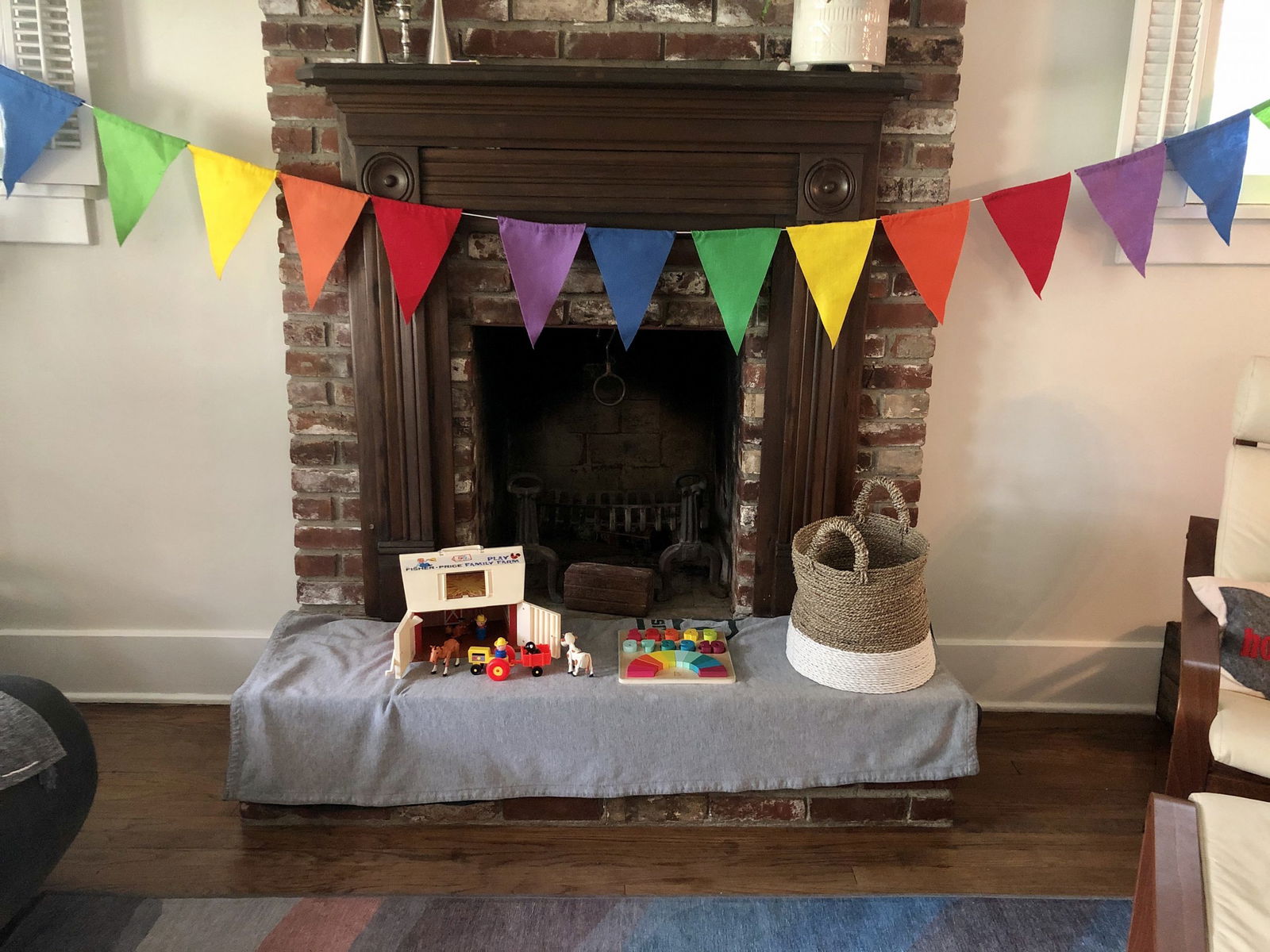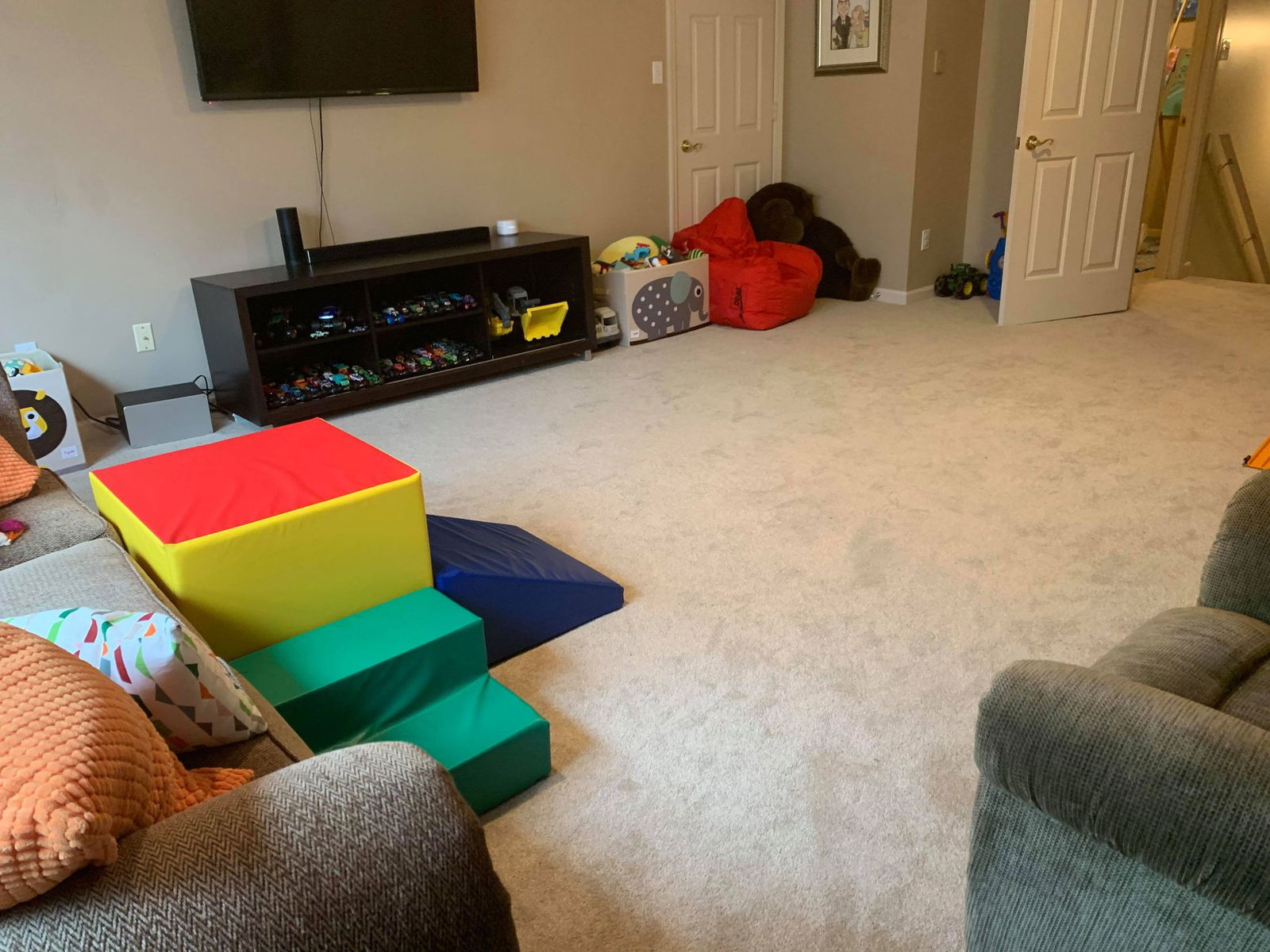Minimizing the Mess: One Mom’s Approach
Long before TLC’s “Hoarders”, “Eat Pray Love”, and the Konmari Method, I found myself minimizing the mess in my life. At first, it was out of necessity. I moved 6 times in 18 months. A breakup, the sale of my apartment building to be redeveloped, and eventually buying a house were half of the reasons I moved so much. My first move was from a large apartment freshly outfitted with my parents’ nicest hand-me-down mid-century modern furniture and a multitude of Dimpas and Poangs from Ikea to a slightly smaller duplex in the tropics of Florida where items were either damaged by the movers or warped from the humid, salty air. The following moves were each to a progressively smaller space – my favorite of which was a studio apartment with a Murphy bed and a lot of natural light. Each time I moved in those 18 months, I was inadvertently minimizing the mess of random household items and unopened boxes because I was tired of toting them around and repacking them so frequently, or I simply didn’t have the space anymore.
At first, I struggled with deciding which items to keep and which to donate or put on the curb. I didn’t have a lot of expendable income to purchase new items or justify replacements “just because”; my possessions were mostly given to me by loved ones or refurbished by yours truly with a lot of care and attention. How could I possibly get rid of these treasures and risk not having what I needed… or what I thought I needed?
The turning point happened maybe during move #5: I was literally moving two doors down and couldn’t afford nor justify a moving company. My friends and I were carrying furniture and bulky boxes down the street and up three flights of a fire escape. I was over it. I had had enough, especially when the wheel on a dolly bent midway down the block and my prized possessions scattered across the sidewalk.

By the time I moved into the home I purchased – at least five times as big as my apartment – I barely had any possessions that I felt were worth keeping. I had been minimizing the mess for those 18 months without even realizing it. My new home was airy and spacious, not just because of square footage, but because of my purging of belongings prior to moving in. I had kept some essentials like my bed and Fiesta dinnerware (which I still use daily), and sentimental items like photo albums, but got rid of anything I didn’t treasure or truly need. Closets weren’t overflowing, corners weren’t piled high with boxes, and I could see all of my cups in the kitchen cabinets. It was freeing and a new way of living. I felt relieved and unencumbered by the minimized mess. It was a physical and emotional transformation.
Fast forward over a decade (and several more moves both short and long distance), and I am now married with a toddler, cat, and dog. My house is a fraction of the size of the first home I owned, yet more beings inhabit it. There are three closets, and not the walk-in type. There is no basement; there is an attic, but it’s accessed by a pull-down ladder and reaches very high temperatures in the Memphis summers. The garage is damp and musty.
I had become a pro at minimizing the mess, and then my daughter arrived. I had no idea how many belongings accompany a 7 lb. 14 oz. human being. Once again, boxes and miscellaneous items were piled in corners, stuffed into closets, and shoved under beds. I was feeling claustrophobic just knowing those spaces were cluttered, not to mention the constant influx of gifts from well-meaning family members and friends. I had to do something. I had to find a way to get back to minimizing the mess. But where to start?
Whose family room looks like this?

I’m going to share a few strategies that work for me when it comes to minimizing the mess associated with my daughter. I’m not claiming that this is the best way, or even a way that will work for a fraction of you. I realize that one young child is much different than one older child, or multiple children. Perhaps if you’re welcoming your first kiddo, or downsizing to a smaller home, you can most easily embrace my approach. For the rest of you, I hope you find some inspiration that helps with minimizing your mess, whether the material type or mental type.
Strategy 1: Capsule Wardrobe – The concept of the capsule wardrobe (and see Niki’s post from January) has been flooding social media and fashion-related TV shows for a few years now. It has worked really well for me, so I figured why not try it with my daughter’s clothes. I don’t fixate on the number of clothing items she has, but more on the utility of the items. My goal is to have enough clothing for variations in the season’s weather, daily outfit changes if needed, and interchangeability among items. For example, she has two pairs of shoes at any given time. The type of shoe varies based on the season: for summer, she has a pair of closed-toe shoes and a pair of sandals. She has seven pairs of shorts and about 10 shirts consisting of t-shirts and tank-tops. She has a few pairs of leggings, a few dresses, and a two sweat suits. Most of her clothing is color-coordinated so that items can be mixed and matched. There are some random outfits and items that are either family heirlooms, special finds, or gifted items that are also in the rotation. I hang or fold her clothes in outfit pairings so that it’s easy to dress her each day, and to remember what clothing items we actually own.
Strategy 2: Rotate Toys – I mentioned the small size of my house and limited storage. We don’t even have a designated play room. So how do I go about minimizing the mess of toys? I set up stations and rotate the toys. This captures a little bit of the Montessori Method which I have adapted to work for me. I keep some toys in the living room, dining room, and back porch – the places I spend most of my days. There are about three toys in each space at any given time. For example, in the living room, there’s usually some sort of puzzle toy, a musical toy, and a make-believe toy. Most of her books and stuffed animals are in her bedroom. There are some miscellaneous toys arranged in her Target cube shelves, too. Any toys that I don’t place in the living room, dining room, or porch are stored in her closet. About once a week, I randomly rotate items among those spaces, or stow away a few toys in the closet and replace with ones she hasn’t seen in a few weeks. This keeps each toy fresh and seemingly new to her, but also minimizes the mess throughout my house. Yes, she totes items into other spaces and somehow still makes a mess out of the three toys in the living room. But, it’s so much easier to pick up daily when there is less stuff in the first place, and a designated place to put it.


Strategy 3: Let Go – This one might be the hardest strategy to implement. But, as Elsa says, let it go! If my daughter isn’t into a toy after a few rotations of it, I either store it in my hot attic if I like it and its in good condition (maybe she’ll have a sibling someday), or I sell it or donate it. If I don’t love an article of clothing on her, or if she is constantly pulling at a button or tripping on a hem, then I let it go! As she outgrows a size, I sort her wardrobe into three piles: save, pitch, donate/sell. It’s a little more work up front, but I don’t have the physical and mental mess hanging over me.
To demonstrate that I am in fact a normally struggling and exhausted mom like many others, here’s a photo of my daughter’s overflowing, disorganized closet (I won’t show you my office space or entryway credenza):

Maybe I’ll tackle that next, and learn something from this post about Creating a More Organized Home. Or, I could hire a professional like this Memphis mama did:


Good luck minimizing the mess – you might be surprised by what you don’t need!
Here’s the after photo of the other Memphis mama who was motivated to minimize her kids’ mess, too:









